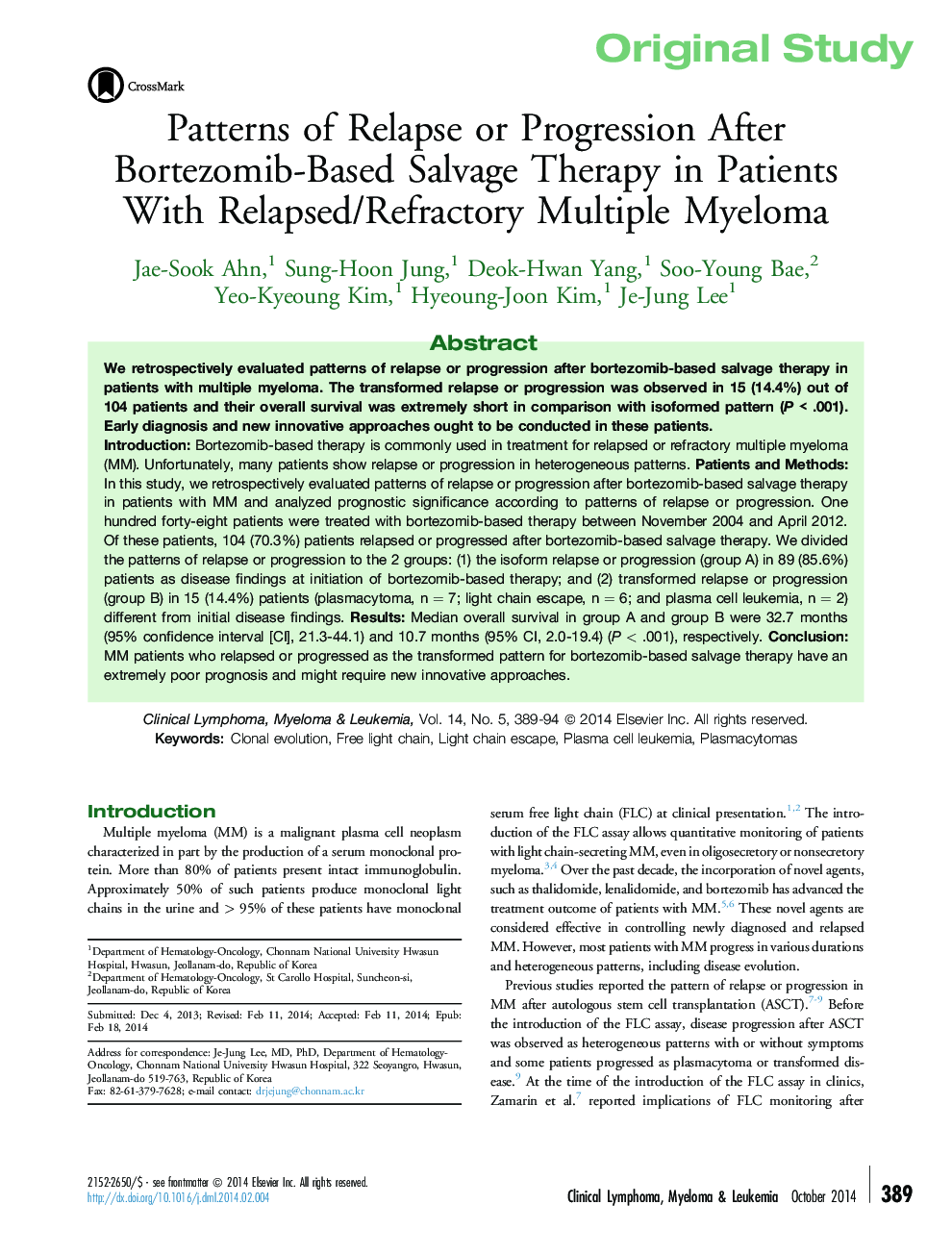| Article ID | Journal | Published Year | Pages | File Type |
|---|---|---|---|---|
| 5882929 | Clinical Lymphoma Myeloma and Leukemia | 2014 | 6 Pages |
IntroductionBortezomib-based therapy is commonly used in treatment for relapsed or refractory multiple myeloma (MM). Unfortunately, many patients show relapse or progression in heterogeneous patterns.Patients and MethodsIn this study, we retrospectively evaluated patterns of relapse or progression after bortezomib-based salvage therapy in patients with MM and analyzed prognostic significance according to patterns of relapse or progression. One hundred forty-eight patients were treated with bortezomib-based therapy between November 2004 and April 2012. Of these patients, 104 (70.3%) patients relapsed or progressed after bortezomib-based salvage therapy. We divided the patterns of relapse or progression to the 2 groups: (1) the isoform relapse or progression (group A) in 89 (85.6%) patients as disease findings at initiation of bortezomib-based therapy; and (2) transformed relapse or progression (group B) in 15 (14.4%) patients (plasmacytoma, n = 7; light chain escape, n = 6; and plasma cell leukemia, n = 2) different from initial disease findings.ResultsMedian overall survival in group A and group B were 32.7 months (95% confidence interval [CI], 21.3-44.1) and 10.7 months (95% CI, 2.0-19.4) (P < .001), respectively.ConclusionMM patients who relapsed or progressed as the transformed pattern for bortezomib-based salvage therapy have an extremely poor prognosis and might require new innovative approaches.
